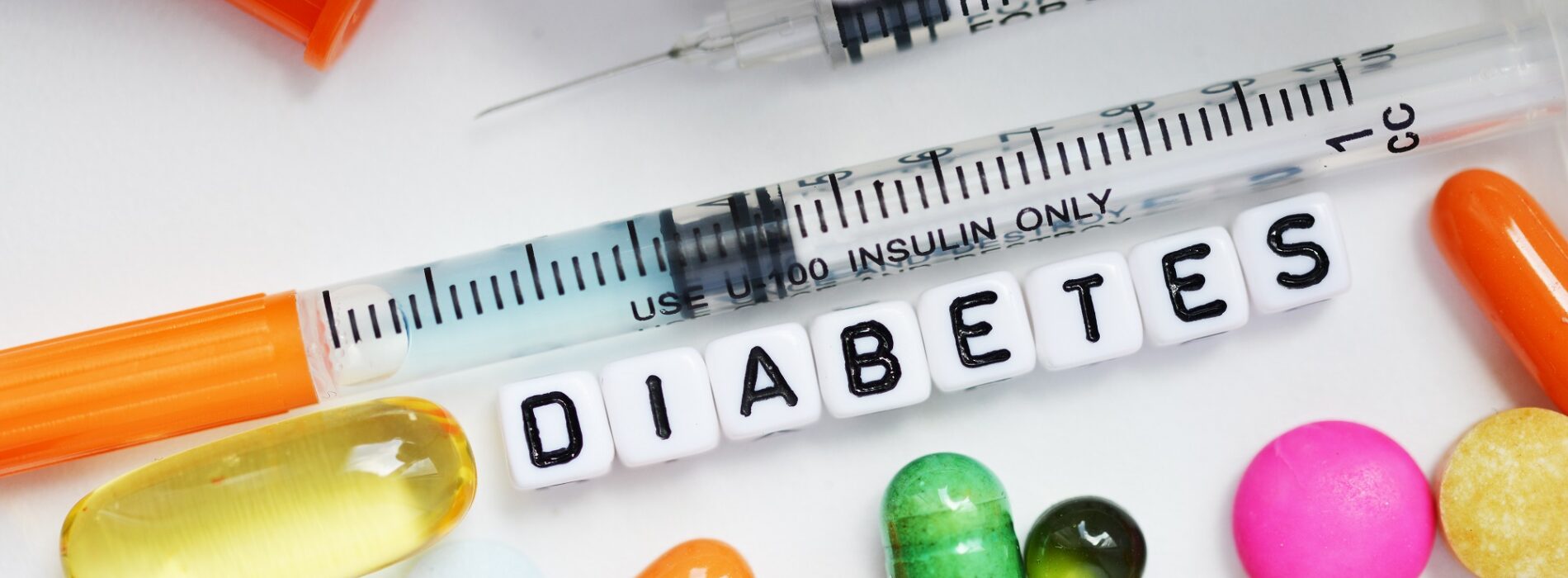Types of Diabetes
- Type 1 Diabetes
Once known as juvenile diabetes or insulin-dependent diabetes, is a chronic condition in which the pancreas produces little or no insulin. Insulin is a hormone needed to allow sugar (glucose) to enter cells to produce energy.
Type 1 diabetes accounts for about 5% of diabetes cases worldwide. However, type 1 diabetes is still the most common form of diabetes in children. Without insulin therapy, a person with type 1 diabetes will eventually die. In some countries, life expectancy for a child with type 1 diabetes is less than 1 year after diagnosis.
In developing countries where health care capacity is inadequate, type 1 diabetes can be a death sentence for a vulnerable child.
2. Type 2 Diabetes
The most common type of diabetes, is a disease that occurs when your blood glucose, also called blood sugar, is too high. Blood glucose is your main source of energy and comes mainly from the food you eat. Insulin, a hormone made by the pancreas, helps glucose get into your cells to be used for energy.
Type 2 diabetes accounts for about 95% of diabetes cases worldwide. It often develops over many years, with the result that a great number of people remain undiagnosed even as their bodies are being damaged by excess blood glucose. Type 2 diabetes and its complications are largely preventable but remain responsible for millions of premature deaths and disabilities, especially in the developing world.
It is largely preventable but remains responsible for millions of deaths and many more disabling and life-threatening complications.
Sign and Symptoms
- Increased Thirst: A persistent feeling of thirst that is difficult to satisfy.
- Frequent urination: Increased urination, especially at night.
- Increased hunger: A feeling of constant hunger, even after eating.
- Fatigue: Tiredness or a lack of energy.
- Blurred Vision: Changes in vision due to fluctuating blood sugar levels.
- Slow Healing of Cuts and Wounds: Increased risk of infections and slower recovery from injury.
- Dry Skin: Dehydration can lead to dry, itchy skin.
- Weight Loss: Unintentional weight loss, more common in Type 1 diabetes
3. Gestational Diabetes
Gestational diabetes mellitus (GDM) is a condition characterized by glucose intolerance that occurs during pregnancy. It poses risks to both the mother and the developing fetus, necessitating careful monitoring and management. While specific studies regarding gestational diabetes in Fiji may be less comprehensive than those in other regions, there are relevant considerations regarding its prevalence, risk factors, and management strategies.
Prevalence and Risk Factors
1. Prevalence: There has been a rising trend in diabetes prevalence in Fiji, with gestational diabetes being part of this broader public health issue. Factors such as lifestyle changes, dietary habits, and increasing obesity rates in the region contribute to elevated risks.
2. Risk Factors: Common risk factors for GDM include:
– Age (women over 25 years are at higher risk)
– Family history of diabetes
– Obesity or overweight status
– Previous history of gestational diabetes
– Sedentary lifestyle
Health Impact
Gestational diabetes can lead to several complications for both the mother and the fetus, such as:
– For the mother: Increased risk of hypertension, pre-eclampsia, and a higher likelihood of developing type 2 diabetes later in life.
– For the Fetus: Higher birth weight, preterm birth, and increased risks of metabolic disorders later on.
Screening and Diagnosis
Routine screening for gestational diabetes is often recommended around the 24th to 28th weeks of pregnancy. This typically involves:
– A glucose challenge test (GCT)
– If the GCT is abnormal, a follow-up oral glucose tolerance test (OGTT) is done for diagnosis.
Management
1. Dietary Modifications: A balanced diet that controls carbohydrate intake and promotes healthy eating habits is crucial for managing blood glucose levels.
2. Physical Activity: Regular, moderate exercise is encouraged unless contraindicated, as it helps to manage weight and blood sugar levels.
3. Monitoring: Close monitoring of blood glucose levels is essential during pregnancy to ensure they remain within a target range.
4. Medication: If diet and exercise are not sufficient to control blood sugar levels, insulin therapy or oral hypoglycemic agents may be initiated.
5. Postpartum Care: Women diagnosed with GDM require screening for type 2 diabetes postpartum, as they are at increased risk for developing it later.
Public Health Response
Fiji has been working on various public health initiatives to address diabetes, including:
– Community education on the importance of nutrition and physical activity.
– Training healthcare providers in the screening and management of gestational diabetes.
– Programs targeted at reducing non-communicable diseases in general, which can impact rates of diabetes and its complications.
Additional Information:
Statistics:
- In 2022, about 307,000 people in New Zealand had diabetes, an increase of 15,000 from 2021. Men (6.8%) and women (5.9%) were affected differently, with the Pacific population having the highest rate at 12.5%. Diabetes rates varied by age and location, especially among those aged 65-74, where rates ranged from 9.4% to 27.9%. The COVID-19 pandemic caused an increase in diabetes cases, rising from 5.8% in 2020 to 6.4% in 2022. While 67.7% of diabetics used medication, adherence varied by district. Māori individuals experienced more complications and hospitalizations, with hospital bed occupancy for diabetics reaching 27.6% in the 65-74 age group, showing ethnic disparities (Te Tāhū Hauora, 2021).
- According to the 2021 IDF Diabetes Atlas, it has been reported that a significant 10.5% of the adult population aged between 20 and 79 years is affected by diabetes, with alarming statistics indicating that nearly half of these individuals are unaware that they are living with this chronic condition, (International Diabetes Federation, 2023).
